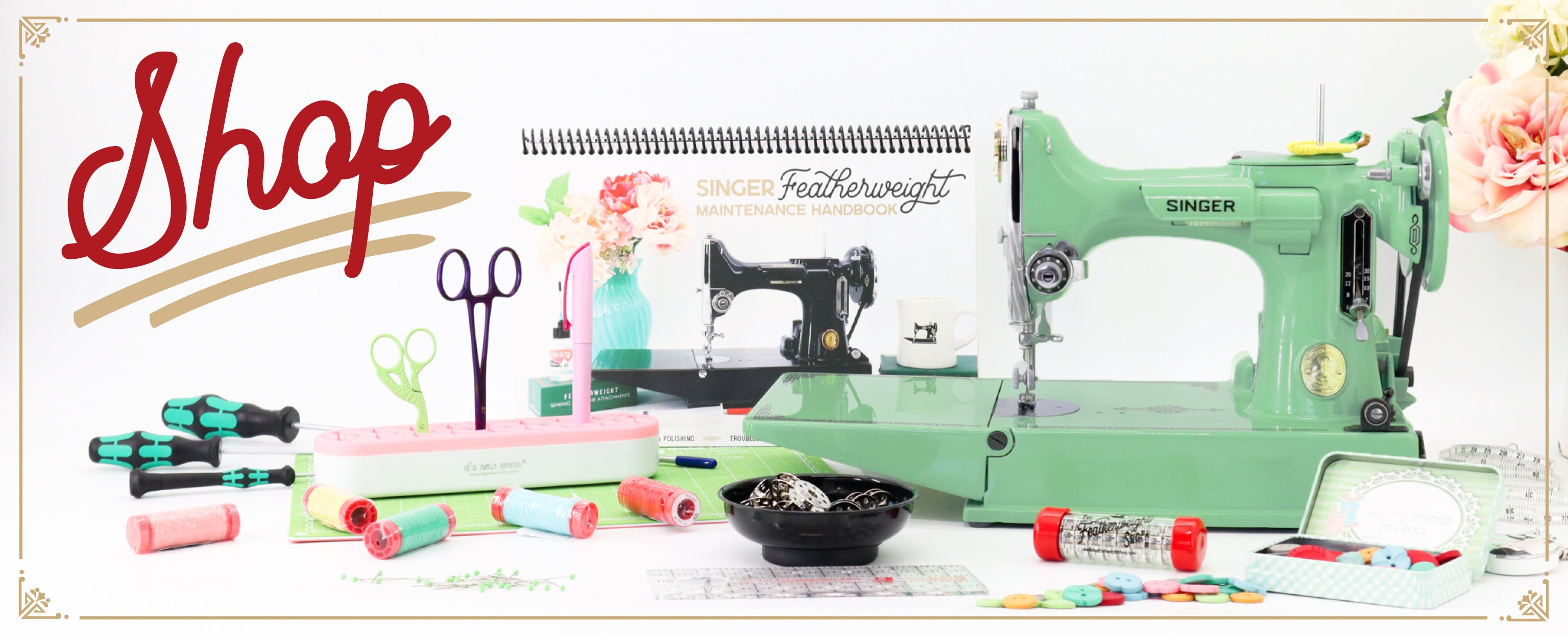How to Use the Singer Walking Presser Foot

This Walking Foot is in a class all by itself. But then, should it be any surprise coming from the SINGER of yesterday? All metal, sturdy, high quality and with no plastic parts – it was built to last! Those factors alone help play a major role in the collector’s price tag that these fetch today.
The Singer Walking Presser Foot is designed to produce superior stitching on fabrics which by the nature of their texture, surface, or weave, tend to ease, stretch, or adhere when stitching. Fabrics typical of this group are: plastics and coated fabrics, napped fabrics, pile fabrics, rough texture fabrics, knitted fabrics, polished surface fabrics. Watch the video far above and you will notice how the Walking Foot really does somewhat “walk” (waddle) like a Penguin. In fact, it was given that nickname many years ago by another Singer collector and the nickname has gone down in history.

It is also recommended for stitching suede leather, kid, capeskin and fine supple leather used for wearing apparel or trimming accents.

The construction of the Walking Presser Foot provides two toes; the left moves in unison with the feed of the sewing machine, carrying the two plies of material without slipping or stretching; the right toe holds the material firmly in position while the left toe returns for each succeeding stitch.

The delicate but firm handling of the material makes the SINGER Walking Presser Foot especially useful in many construction and finishing steps in sewing, where several layers of fabric are stitched, where bias edges are joined, and where fabrics of different textures are combined such as in:
- Binding Blankets and other binding operations where binding is guided by hand
- Stitching pre-folded hems, or freehand hems in fabrics and plastics
- Stay stitching of bias edges
- Stitching curved and bias seams
- Welt or slotted Seams
- Multiple stitching on lapels and facings and Applying patch pockets
Take note of the different toes and applications:
- Inside of outer right toe allows you to achieve a perfect 1/4″ seam
- The outer edge of far-right toe allows a 3/8″ seam – perfectly in line for a 3/8 inch double-fold binding seam
- The outer edge of left big toe also serves as a 1/4″ guide. Perfect to use for quilting just inside the block seam.
- Inside of inner left toe – perfect guide for “Stitching in the Ditch”

I made these two things for my own personal use - a Quilted Tea Cozy, as well as a Handbag, made with laminated cotton. These were both constructed using my own SINGER Walking Presser Foot.


The blanket binding sample was very easy to sew in spite of the many layers and thicknesses. The satin overlapped the layers without any shifting. You may have noticed that I used the seam or cloth guide turned on end. This is recommended for stitching items that have wider width seam allowances. If the Cloth Guide edge does not align to where you want while it is in its normal position, you will see that turning it on end like I did allows the top edge to guide the fabric.


If you are blessed to have one of these treasures in your old Sewing Basket, then sit down with a cup of coffee or tea and learn from the little manual. There is a lot of helpful, practical information! Knowing what you are able to do with this gadget ahead of time will help you to remember your Singer Walking Foot in the future and the wonderful aid it can be to your sewing.

On occasion, a small metal piece inside can be prone to breakage (i.e. piece broken off and missing in the center of the photo above), rendering the attachment useless. It doesn’t happen very often, but it has happened – so just be cautious when purchasing one at a high collector price tag. When you purchase one of these make sure it is tested, sampled and guaranteed.

The Walking Foot on the left is complete whereas the one on the right has a broken internal piece.


We stumble upon one sometimes two of these Walking Feet per year, so check back - you may be one of the lucky ones who get to own one of these highly sought after collectibles!



